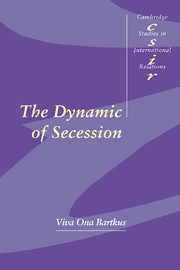Summary
This book investigates secession. It seeks to answer a single question: why do groups decide to secede? Since secession is frequently a contested subject, it may be helpful at the outset to clarify both its meaning and my approach. Secession is the formal withdrawal from an established, internationally recognized state by a constituent unit to create a new sovereign state. The decision to secede represents an instance of political disintegration, when the citizens of a sub-system withdraw their political activities from the central government to focus them on a centre of their own. When the leaders of both a seceding community and the state express their positions in stark, absolute terms, the avenue of compromise is often precluded, thereby causing secessionist conflicts to be among the most bitter of struggles. To the observer, secession often appears irrational as it entails the ostensible sacrifice of economic opportunities and the endurance of social upheaval. Because of the coercive powers which the state can employ in these disputes, secessionist struggles frequently become violent and protracted, as both the seceding community and the state lose the willingness to accommodate each other's needs. Thus, secession is disintegrative in the most fundamental sense: it involves not the overthrow of existing government institutions, but rather the territorial dismemberment of a state. In this book, I refer to the groups attempting secession as “distinct communities.”
- Type
- Chapter
- Information
- The Dynamic of Secession , pp. 3 - 7Publisher: Cambridge University PressPrint publication year: 1999



